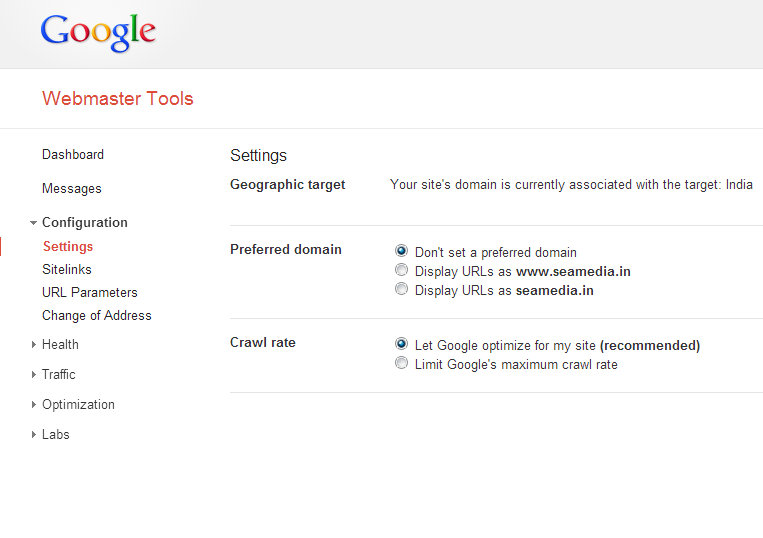Setting Up Targets of Customers with your e-commerce Site
Making your products online by setting up an ecommerce website also make you chance to get customers from different locations. Your ecommerce website can also target customers from other regions. Creating different version of a website to target customers from various regions and languages is one of the key benefits of ecommerce websites. There are a lot of basic things to do to get customers from other locations. There are many benefits of location based marketing. A search like “Chinese restaurants in Mumbai” in Google may give many results; but search with location enabled gives a very few with location co-ordinates. This blog post give you the basic things to do on how to get customers from different location.
Multilingual and Multiregional Websites
People prefer to get a website near to them. They also prefer to read those having their languages too. When your website needs to target audience with different languages, you need to set up the basic guide lines of a multi-lingual websites. Similarly when you target customers from various regions, follow the basic tasks for a multi-regional websites. This makes the base version website; for example – your-ecommerce-website.com to other versions like your-ecommerce-website.in to target people of India and your-ecommerce-website.com/en to set up a website with English version or even subdomains like mumbai.your-ecommerce-website.com.
Options
1 Country code – ( Clear Geo Targeting possible )
2 Sub Directories – ( Easy to set up and separate Sites )
3 Sub Domains – ( Easy Maintenance )
The base version must be very highly clear and optimized, a mistake there at base version will be multiplied. Also make sure you have the appropriate infrastructure to support the multilingual and multiregional websites. Setting up a multi-regional websites need legal or administrative requirements along with acquiring eligibility to use a country-specific domain name. Some of the basic things go in the html codes with giving Geo location code at all the websites.
Giving the Required Html codes
Canonical tags to avoid duplication problems
Because you are setting up various versions of your website, there may be a chance to have duplicate content problems. This happens when the same content comes at different URLs. So to make the search engines understand that two web pages must be considered as from a single source; use the canonical html tag. Make sure the links are tagged with rel=canonical” link element.
There is no need to give a non index or no follow tag to one of the webpages. This canonical page tagging makes both the URLs indexed. This is how you inform Google about multiple versions of the same content website.
Defining Related Website
There are other ways to tell Google that your Multilingual and Multiregional Websites are related websites.
Method 1 : Giving a Link with rel=”alternate”
<link rel=”alternate” hreflang=”hi” href=”href=”http://your-ecommerce-website.com/hi”>http://your-ecommerce-website.com/hi” />
Eg:
<link rel=”alternate” href=” href=”http://your-ecommerce-website.com/ml”>http://your-ecommerce-website.com/ml” hreflang=”ml” />
<link rel=”alternate” href=” href=”http://your-ecommerce-website.com/hi”>http://your-ecommerce-website.com/hi” hreflang=”hi” />
<link rel=”alternate” href=” href=”http://your-ecommerce-website.com/en”>http://your-ecommerce-website.com/en” hreflang=”en” />
Method 2: When Publishing non HTML files
A different language version of a URL can be specified by an HTTP header as
Link: < href =”http://in.your-ecommerce-website.com/”>http://in.your-ecommerce-website.com/>; rel=”alternate”; hreflang=”hi”
Method 3: Sitemap
Use the sitemap to specify different version of website. For example a website like your-ecommerce-website.com that targets the audience from Hindi and Malayalam languages beside English must be defined as:
<?xml version=”1.0″ encoding=”UTF-8″?>
<urlset xmlns=” hre f=”http://www.sitemaps.org/schemas/sitemap/0.9″>http://www.sitemaps.org/schemas/sitemap/0.9″
xmlns:xhtml=”http://www.w3.org/1999/xhtml”>
<url>
<loc> href=”http:// www.your-ecommerce-website.com/english/%3c/loc”>http://www.your-ecommerce-website.com/english/</loc>
<xhtml:link
rel=”alternate”
hreflang=”ml”
href=” href =”http:// www.your-ecommerce-website.com/malayalam/”>http://www.your-ecommerce-website.com/malayalam/”
/>
<xhtml:link
rel=”alternate”
hreflang=”hi”
href=” href=”http:// www.your-ecommerce-website.com/hindi/”>http://www.your-ecommerce-website.com/hindi/”
/>
<xhtml:link
rel=”alternate”
hreflang=”en”
href=” href=”http:// www.your-ecommerce-website.com/english/”>http://www.your-ecommerce-website.com/english/”
/>
</url>
<url>
<loc> href=”http:// www.your-ecommerce-website.com/malayalam/%3c/loc”>http:// www.your-ecommerce-website.com/malayalam/</loc>
<xhtml:link
rel=”alternate”
hreflang=”en”
href=” href=”http:// www.your-ecommerce-website.com/english/”>http:// www.your-ecommerce-website.com/english/”
/>
<xhtml:link
rel=”alternate”
hreflang=”hi”
href=” href=”http:// www.your-ecommerce-website.com/hindi/”>http:// www.your-ecommerce-website.com/hindi/”
/>
<xhtml:link
rel=”alternate”
hreflang=”ml”
href=” href=”http:// www.your-ecommerce-website.com/malayalam/”>http:// www.your-ecommerce-website.com/malayalam/”
/>
</url>
<url>
<loc> href=”http:// www.your-ecommerce-website.com/hindi/%3c/loc”>http:// www.your-ecommerce-website.com/hindi/</loc>
<xhtml:link
rel=”alternate”
hreflang=”ml”
href=” href=”http:// www.your-ecommerce-website.com/malayalam/”>http:// www.your-ecommerce-website.com/malayalam/”
/>
<xhtml:link
rel=”alternate”
hreflang=”en”
href=”href=”http:// www.your-ecommerce-website.com/english/”>http:// www.your-ecommerce-website.com/english/”
/>
<xhtml:link
rel=”alternate”
hreflang=”hi”
href=”href=”http:// www.your-ecommerce-website.com/hindi/”>http:// www.your-ecommerce-website.com/hindi/”
/>
</url>
</urlset>
WebMaster Option on – selecting country
If your website did not follow the country code domain naming, and yet you need to target a specific country, geo.position” or “distribution” or HTML attributes is not enough for geo-targeting; use the following steps.
Go to Google Webmaster where we can give a specific region that we are targeting.
Under Google Webmaster> Conf > Settings >
Use geo targeting for websites selecting your preferred country.
This helps Google determine which region the website is targeting and which version of the website must be shown in the search results for that location. This is how you make your regional website appear in search engine results for a particular set of customers.

Please Note that if you are using a language oriented website, it is better not to give the country targeting data as above.
Google Detects Location
Google now gives search results that are considered to be more appropriate to the users. The Google’s search engine site are automatically redirected to the country version depending on the location of the users. Google detects our location with parameters like the IP address, data from the location history (which must be enabled by the user). Google is working on more better techniques to find out the user location with mobile technologies that include GPS data too.
People prefer to go to those stores that they know, so give the location details and a bit of cool marketing techniques too. Attract those customers with offers like “Come in within the next 30 minutes and receive 20% off your meal. Check out this ad below that does a similar marketing.






